Experimental facilities
This laboratory has the infrastructure that permits the solving of problems related to almost any hydraulic environment, among which include the following:
- Fluvial Hydraulics
- Restoration of banks and shores (deltas, inlets)
- Transportation of contaminants
- Hydraulic Works
- Reservoirs
- Urban Hydrology
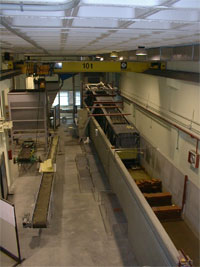
General view of the hydraulic plant
The laboratory is 100m2 and its surface allows the construction of large scale physical modelling.
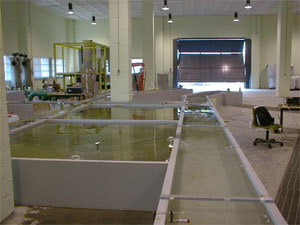
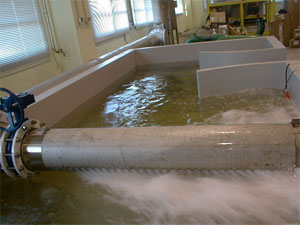
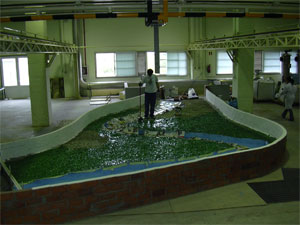
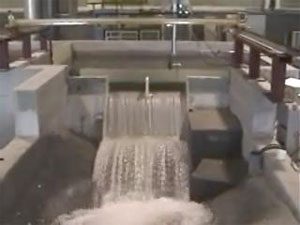
Examples of various physical models made in the CITEEC (storm tank, river meander, overflow structure of reservoir).
Two closed circuit systems with a capacity of 400 L/s and 120 L/s supply water to the laboratory. The laboratory also has a closed circuit sand carrying system, featuring two automated chutes, for the controlled storage and supply of sand for the study of erosion on living beds.
There is also a canal that is 30m long, 2m wide and 1.5m deep, used for the analysis of riverbed structures, the analysis of the transport os sediments, or may be used for the study of steep canals or mechanisms which allow fish travel upstream.
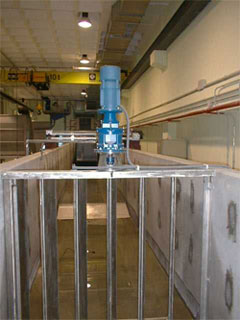
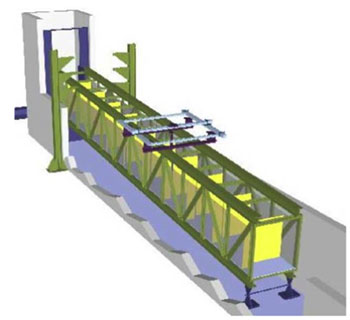
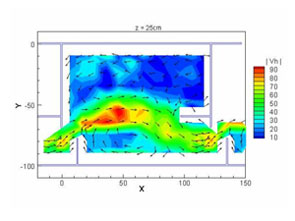
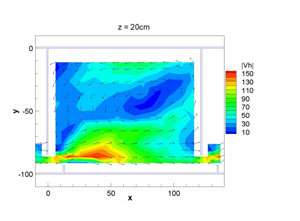
View of the hydraulic canal and of tests on the vertical salmon pass.
This laboratory has been built with the highest possible operational information and quality control in mind. Data may be obtained specifically through electronic devices, which also control the water and sand circulation systems, and also through the instrument positioning control.











